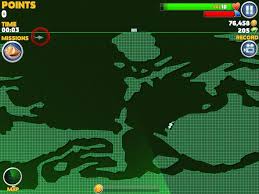


In the article "An Extraordinary Shark", the zoologist Samuel Garman depicts a frilled shark ( Clamydoselachus anguineus) the superior inset depicts dorsal and ventral views of the shark's head the inferior inset depicts two, trident-shaped teeth.

The Graeco–Latin nomenclature of the frilled shark derives from the Greek chlamy (frill) and selachus (shark), and the Latin anguineus (like an eel) besides its common name, the frilled shark also is known as the "lizard shark" and as the "scaffold shark".

In the article "An Extraordinary Shark" Garman classified the new species of shark within its own genus and family, and named it Chlamydoselachus anguineus (eel-like shark with frills). XVI, 1884) the zoologist Samuel Garman published the first taxonomy of the frilled shark, based upon his observations, measurements, and descriptions of a 1.5-metre (4 ft 11 in)–long female shark from Sagami Bay, Japan. Three years later, in the Bulletin of the Essex Institute (vol. After three years (1879–1881) of marine research in Japan, Döderlein took two specimen sharks to Vienna, but lost the taxonomic manuscript of the research. The zoologist Ludwig Döderlein first identified, described, and classified the frilled shark as a discrete species of shark. Usually caught as bycatch in commercial fishing, the frilled shark has some economic value as a meat and as fishmeal and has been caught from depths of 1,570 m (5,150 ft), although its occurrence is uncommon below 1,200 m (3,900 ft) whereas in Suruga Bay, Japan, the frilled shark commonly occurs at depths of 50–200 m (160–660 ft). Although it has no distinct breeding season, the gestation period of the frilled shark can be up to 3.5 years long, to produce a litter of 2–15 shark pups. Contained within chondrichthyes ( egg capsules) the shark embryos develop in the body of the mother shark at birth, the infant sharks emerge from their egg capsules in the uterus, where they feed on yolk. africana, are aplacental viviparous animals, born of an egg, without a placenta to the mother shark. Reproductively, the two species of frilled shark, C. When hunting food, the frilled shark moves like an eel, bending and lunging to capture and swallow whole prey with its long and flexible jaws, which are equipped with 300 recurved, needle-like teeth. To live on a diet of cephalopods, smaller sharks, and bony fish, the frilled shark practices diel vertical migration to feed at night at the surface of the ocean. The two species of frilled shark are distributed throughout regions of the Atlantic and the Pacific oceans, usually in the waters of the outer continental shelf and of the upper continental slope, where the sharks usually live near the ocean floor, near biologically productive areas of the ecosystem. The common name, frilled shark, derives from the fringed appearance of the six pairs of gill slits at the shark's throat. The frilled shark is considered a living fossil, because of its primitive, anguilliform (eel-like) physical traits, such as a dark-brown color, amphistyly (the articulation of the jaws to the cranium), and a 2.0 m (6.6 ft)–long body, which has dorsal, pelvic, and anal fins located towards the tail. The frilled shark ( Chlamydoselachus anguineus) and the southern African frilled shark ( Chlamydoselachus africana) are the two extant species of shark in the family Chlamydoselachidae.


 0 kommentar(er)
0 kommentar(er)
